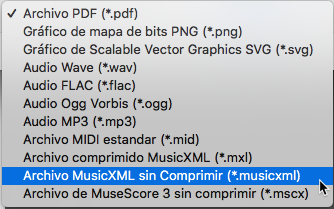

- #Music21 how to export to musicxml pro
- #Music21 how to export to musicxml software
- #Music21 how to export to musicxml free
- #Music21 how to export to musicxml windows
You can import individual flows into existing projects, for example, if you want to bring together multiple existing pieces into one project for publishing, or if you have an empty project file with your preferred settings saved and want to reuse those settings.
#Music21 how to export to musicxml pro
It is possible in Dorico Pro both to import and export different types of files. It allows you to select replacement fonts that are installed on your computer as substitutes.Įxternal files are files in different formats than Dorico projects, such as MIDI, MusicXML, or tempo tracks.


The Missing Fonts dialog appears when you open a project that contains a font that you do not have installed on your computer. In such cases, Dorico Pro shows a warning message to make you aware of any implications. You can open projects that were last saved in other versions of Dorico than the one you have.

It is possible a more sophisticated and potentially more interactive program could be built with more effort that would be a reasonable compromise between the simplicity and limitations of FreeDots on one hand and the complexity and expense of GOODFEEL on the other.This chapter helps you to get started with Dorico Pro.ĭorico is based on a number of key concepts that come from its design philosophy.
#Music21 how to export to musicxml free
A very basic program to convert MusicXML to Braille could be written in literally 5 minutes using music21, but it would presumably suffer the same sorts of limitations as other free automated programs like FreeDots. Music21 is not a single program but rather a programming toolkit that can be used to create utilities for working with musical scores. It is an ambitious project and he could use help, especially with the GUI aspect of things, so if you are programming skills, check it out and see if perhaps there is anything you can do here.Īs of this writing (August 2013), Mario is in the process of moving his project to a new site, so if the previous link does not seem to be active, try the new one. His goal is to eventually produce a full-fledged editor that can import and export both Braille and MusicXML. This is still in the early stages, but appears to be quite promising. Mario Lang, the developer of FreeDots, is currently working on a program called Braille Music Compiler designed to solve the opposite problem: how to get from Braille to standard notation. There is an online front end to this program that you can run without installing anything: It is unknown to us how well it works or what its limitations are.
#Music21 how to export to musicxml windows
It is provided as a Windows installer or as Java source that should run on other platforms as well. Automated conversion will likely never be as sophisticated as the results an expert can obtain using a program like GOODFEEL, but automation is nice in itself, and so is the fact that FreeDots is indeed free. FreeDotsįreeDots is an open source program that can automatically convert notated music in the form of MusicXML files into Braille. It can export to MusicXML, allowing easier interchange with other notation programs. The Braille Music Editor (BME) is a commercial product for Windows (?) that allows users to create Braille scores directly. An open issue is to improve the ability to automatically convert standard MusicXML files (produced by other notation programs like Finale, Sibelius, or MuseScore) into the Lime format used by GOODFEEL. Blind users can take advantage of the Lime Aloud scripts to make Lime more accessible. These tools run on Windows and are usable by blind and sighted users alike.
#Music21 how to export to musicxml software
GOODFEEL is the most well-known and probably the most complete package for producing Braille music scores, consisting of the GOODFEEL translator itself as well as Lime notation software for direct computer entry of scores and SharpEye for scanning of printed scores. We welcome feedback from users of these systems so we can provide more useful information to other readers. Our intent with this document is to provide an assessment of the strengths and weakness of each of them, but currently we have only brief synopses. There are a number of tools for creating and working with Braille music notation.


 0 kommentar(er)
0 kommentar(er)
